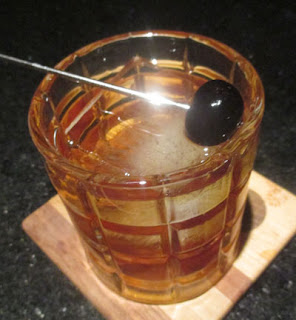1 1/2 oz Plymouth Gin (Barr Hill)
3/4 oz Sweet Vermouth (Cocchi)
1/4 oz St. Germain (St. Elder)
2 dash Peach Bitters (Fee Brothers)
Stir with ice, strain into a cocktail glass, and garnish with a lemon twist.
I recently spotted another reference to Jamie Boudreau's
L'Amour en Fuite which was one of his early St. Germain drinks that really took off due to how well Lillet, elderflower, and absinthe join forces. Indeed, Lillet and elderflower have enough overlapping flavor elements that the latter replaced the former in the Corpse Reviver #2 to generate the
Sunflower. Around that same time in 2007, Boudreau also created the La Bicyclette that we made at home in 2008 but never got entered into the blog, and it also never seemed to catch on as much perhaps since fewer people have peach bitters. Therefore, I tracked down the recipe on Boudreau's
Spirits and Cocktails blog (strangely, it does not appear in his
Canon Cocktail Book) and revisited the drink 12 years later.

La Bicyclette's name fed into the St. Germain lore that was presented where "flower-gatherers, who often use bicycles to usher the delicate blossoms back to the village, serve as a subtle mascot to our elderflower liqueur, illustrated proudly in our logo" (quoted from the liqueur's website). Once prepared, La Bicyclette donated a lemon, orchard fruit, and grape bouquet to the nose. Next, a grape sip pedaled into a juniper, peach, and elderflower swallow.































 The 2017 collection of 855 drink recipes, bartender tributes, and essays on hospitality from CocktailVirgin's Frederic Yarm. Available at Barnes and Noble and Amazon.
The 2017 collection of 855 drink recipes, bartender tributes, and essays on hospitality from CocktailVirgin's Frederic Yarm. Available at Barnes and Noble and Amazon. The 2012 collection of 505 drink recipes, techniques, and Boston bar recommendations from Frederic Yarm. Available at Amazon and Barnes and Noble.
The 2012 collection of 505 drink recipes, techniques, and Boston bar recommendations from Frederic Yarm. Available at Amazon and Barnes and Noble.